“Where the cow won’t give milk anymore” is a standard lyric in old classic country songs; perhaps you’ve wondered why. Well, back in the early days many strange and downright bizarre occurrences happened on the farm, most of which were thought to be the product of superstition, bad living or old wives’ tales; but that was before modern measuring equipment, grounding methodologies, equipotential planes, voltage gradient ramps (transition areas) and ensuring a low-impedance path to ground. Let’s compare what many have believed and what modern principles of electricity have proven to be the real culprit and, in many cases, the reason for these strange and often devastating occurrences that plagued many livestock farms in the U.S. and throughout the world.
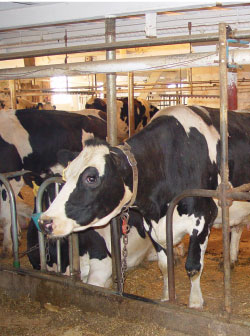
Photo 1
In this article we will look at some of the effects of stray voltage and then see how we can try to mitigate those effects through a good understanding of the many sources of stray voltage and of how those voltages interact, along with the different degrees of sensitivity of not only animals but also humans to the flow of electrical current.
The Quest
The Culprit
The term stray voltage is defined in Wikipedia as “the occurrences of voltage between two objects that should not have any voltage difference between them.” Stray voltage has also been defined as “the 60 Hz electric potential between two contact points in the dairy barn, and the floor is normally one of the contact points.” Additionally, stray voltage is used to describe “the gradient or rate of change with respect to distance of electrical potential in the surface of the soil, associated with single-wire earth return electricity distribution systems used in some rural farming communities and locations.” This gradient is low at points far away from the earth return connections, but it increases near the ground rods where the metallic circuit enters the earth.
Hot Foot
History has shown us that this stray voltage can lead to serious problems for livestock of all types, as well as for personnel. Many horseracing tracks have experienced, and can attest to, incidents of stray voltage at levels that often will cause horses to quit eating and drinking, and many times to refuse to return to their stalls. This has happened at not just one but at many tracks and thoroughbred farms across the U.S. and abroad. While troubleshooting at a thoroughbred stud farm, this author has witnessed firsthand incidents of 120 volts to ground between an automatic watering device and the earth.

Photo 2. Conductive elements are widely used in corrals and containment areas.
One can only imagine the effect of being shod with steel shoes and nails, and then unknowingly becoming a path to ground for a stray voltage source, while penned up with no way to escape, and no understanding of what is happening. Many handlers have reported horses going wild or becoming crazed while in their stalls and for no apparent reason kicking and bucking wildly until such time as they effect an escape from the area, only to find that once they are no longer in the area of exposure, they quickly return to their previously calm demeanor.
With many millions of dollars being spent annually for the breeding, training, and maintenance of some of the finest thoroughbred race horses, some of which have become household names here in the United States and across the globe, the horseracing industry can hardly afford to hazard the effects of stray voltage, especially since stray voltage could not only cause detrimental effects to the horses but also to the many handlers, riders and others involved in the daily routine so vitally necessary to this industry.
A Pig in a Pen
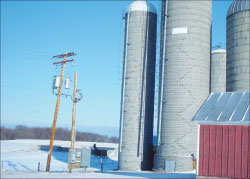
The Cows Just Won’t Give Milk!
The most widely publicized incidents, however, have been in the cattle and dairy industries, with many of the abovementioned events occurring in many areas of Wisconsin, Minnesota, Michigan, Idaho and Texas, to mention a few. Many of these farms have experienced varying degrees of loss of or low milk production, erratic behavior in the cows, and many have experienced all manner of health problems, including death, due to these stray voltages passing through the bodies of the cows.
With the advent of today’s modern farm equipment—such as automatic waterers, automatic feeders, automatic milking machines and many others—that is used in almost all modern production facilities, it is not too hard to understand that with incidents of unchecked stray voltages, we could have real serious aftereffects. These aftereffects can lead to a serious impact on the day-to-day activities that are vital to production in these facilities. As with the previously mentioned livestock, a hefty investment is almost always made up-front for the promise of return; and when these animals are unable to produce, a serious economic ripple is felt immediately— from the barn all the way to the grocery market or the butcher.
By Any Other Name
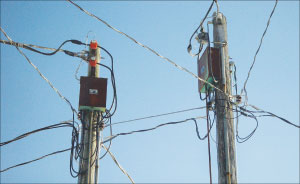
Many of these stray voltages are the result of poor wiring, of improper grounding, and of systems that have deteriorated throughout the years. As the demand on production increases, commercial livestock farms have grown into mega farms with mega production to stay in step with the growing demand. These farms are not only faced with the need for more sophisticated equipment but also with the need for more power to run that equipment, many times leading to an out-of-sight, out-of- mind philosophy regarding the old services, old wiring, and old equipment that was installed throughout the farm previously. As these systems fall into disrepair, they could very well be lending themselves to occurrences of high levels of stray voltage. While in some cases these old systems are, indeed, the sources of stray voltage, it may also be the result of the small voltages required to move current through the grounded neutral system; i.e., neutral-to-earth voltage, as was previously mentioned.
The Act
Many solutions to the issue of stray voltage have been researched and pondered. One such solution created to deter incidents of stray voltage is the “Stray Current and Voltage Remediation Act” put into place by the state legislature in Idaho, that cites the following: “the safe and efficient distribution of electricity is critical to the well being of citizens and the economy of the State, including the business of agriculture, and this enactment is necessary for the public welfare and benefit.” This act was instituted in the state of Idaho to pave the way for studies and research into methods of mitigation of stray voltage. [61-801 Legislative Findings and Purposes, State of Idaho, Stray Current and Voltage Remediation Act]
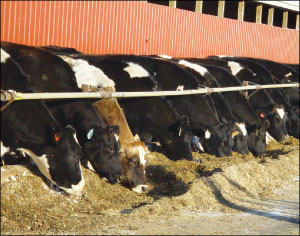
Photo 5. Animal contact point at outdoor feeding area
This act is just one of many methods put into place not so much to solve the problem of stray voltage but to minimize it, so that, along with a good understanding, the sources of stray voltages can be analyzed and corrected in existing facilities and possibly prevented in new construction. We have resigned ourselves to the fact that, yes, this is an issue and now it is time for all of us to join together to see how we can affect change. With the use of modern engineering principles and the installation methods prescribed inNationalElectrical Code, we can and have provided a safer atmosphere for livestock containment and production facilities across the spectrum, as well as for the personnel and families that live and work in and derive their living from them.
Good Clean Installations
Let’s look at some of the requirements for agricultural buildings and at some of the methods cited inNEC547, Agricultural Buildings, to help avoid the effects of stray voltages. These requirements are vital and provide a safe electrical installation prior to the incorporation of livestock and personnel to care for them. While many smaller livestock farms can accomplish what is needed for day-to-day activities and production efforts all in one building, many of the larger facilities or mega farms have multiple buildings or facilities all on one farm, due to the size of the operation and production needs.
Distribution Point
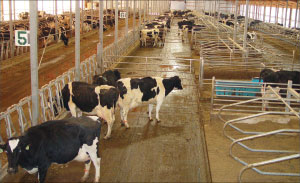
Site Isolation
A site isolation device is used on many livestock farms for the purpose of isolation, system maintenance, emergency disconnection, or connection of optional standby systems. Having all of the distribution located at one point allows the owner or manager of the site to begin troubleshooting any issues with stray voltage right at the source, while methodically eliminating possible sources one by one, before moving on to other areas that might be suspect. It is paramount to know the location of all of the electrical services if there are multiple services, the location of the electrical equipment, and the location of the electrical wiring so that sources of stray voltage can be readily determined in order to correct and minimize the occurrences of any incidents resulting from stray voltage.
When a facility has multiple buildings and they are fed from an electrical distribution point, a site isolation device is required per 547.9(A)(1). Site isolation devices are required to be pole-mounted per 547.9(A)(2), and are required to meet all of the clearance requirements in 230.24. Site isolation devices are also required by 547.9(A)(3) to be able to disconnect all ungrounded service conductors simultaneously from the premises wiring system.
Grounding of the site isolation device shall be accomplished by connection of the system grounded conductor to a grounding electrode system via a grounding electrode conductor per 547.9(A)(5). The site isolation device enclosure is required to be bonded by connection to the grounded circuit conductor and the grounding electrode system per 549.7(A)(4). Site isolation devices are also required to be permanently marked to identify them as site isolation devices, with the marking located on the handle or immediate adjacent thereto per 547.9(A)(10). And let’s not forget access to the device; if the site isolating device is not readily accessible, it is required to be capable of being remotely operated by an operating handle installed at a readily accessible location. The operating handle of the site isolating device when in its highest position shall not be more than 2.0 m (6 ft. 7 in.) abovegrade or a working platform per 547.9(A)(8).
Wiring Methods
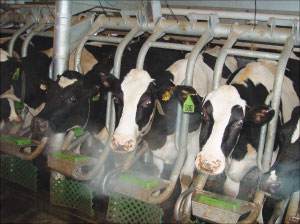
Of course, this is the point where good workmanship comes into play to avoid damage to the insulation of the conductors while they are being installed.
The wiring methods that can be used in these facilities and buildings per 547.5 are Types UF, NMC, Copper SE cables, jacketed Type MC cable, rigid nonmetallic conduit, liquidtight flexible nonmetallic conduit, or other cables or raceways suitable for the location with approved termination fittings.
Equipotential Planes…. Where did it all start?
Let’s take a quick journey back in history to get a better perspective and a clearer understanding of the beginnings of the term equipotential plane.
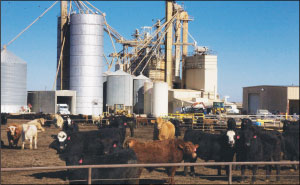
Photo 8. Modern feedlot Photo courtesy Randall County Feedyard, Amarillo, Texas
NEC-1984 was on its way towards the development of both the term and the means to achieve this new way of limiting potential differences. This start can be seen in the new fine print note (FPN) for this edition of the code that follows the requirements for grounding in 547-7, which states, “Bonding together of all separate grounding electrode systems will limit potential differences between them and between their associated wiring systems .”
The term equipotential plane was first introduced in theNECin the 1987 code cycle, in 547-8(B).
Typically installers and designers alike envision wire mesh in concrete bonded to the electrical grounding system as the standard in achieving an equipotential plane; after all, this was the definition given in the 1987 through 1996 cycles of theNEC, and this was often considered the only way to satisfy the requirements in theNECfor livestock containment areas to prevent a difference of voltage from developing in the plane.
While the definition found in 547.9 inNEC-1999 had been housed under the then newly revised heading of “Bonding and the Equipotential Plane,” it still described conductive material as being embedded in the concrete. The definition was moved to 547.2 in the 2002 cycle of the NEC, and then revised to broaden the emphasis that the equipotential plane can also be formed by other means than by just installing mesh or other conductive material in concrete only, by the use of the new wording “embedded in or placed under concrete.” This new verbiage opened up many new ideas and further expounded on how the equipotential plane could be formed.
Studies and research have found that the use of conductive material installed under the concrete, can also effectively reduce the potential difference between other locations in the equipotential plane. Whether the conductive material is installed in or under the concrete, the reliability of the conductive means and its ability to provide a good conductive connection between all metal structures and fixed non-electrical equipment is vital to its effective use, particularly where livestock is concerned.
Not only didNEC-2002 expound on the location of the conductive materials, it told us where it was required and where it was not required. Dirt confinement areas that contained metallic equipment that was accessible to animals and was likely to become energized are one of the areas that would not require an equipotential plane in this code cycle. While not requiring an equipotential plane, these areas now require that the circuits powering those pieces of equipment be ground-fault circuit-interrupter (GFCI) protected.
While there were changes to the equipotential areas required and not required inNEC– 2005, the 2008NEChas further broken down the areas required to indoor and outdoor locations; this will help installers and designers alike to precisely and effectively determine why, when, and where the equipotential plane is required. Let’s look at these requirements.
Equipotential Planes…. Practical Application
Equipotential planes have been used in many applications where there is a chance of potential differences and stray voltage adversely affecting either humans or animals.
Equipotential planes are required, for example, in areas where there is a pool installed as well as in livestock and agricultural facilities. In indoor livestock confinement areas with concrete floors, an equipotential plane is required to be installed where metallic equipment is located that may become energized and that is accessible to livestock per 547.10(A)(1).
In outdoor livestock confinement areas with concrete floors, as well, an equipotential plane is required to be installed where metallic equipment is located that may become energized and that is accessible to livestock per 547.10(A)(1). The equipotential plane for both areas is required to encompass the area where livestock stands while accessing metallic equipment that may become energized.
Bonding of the Equipotential Plane
Where an equipotential plane is required in a livestock containment area or another area with a concrete floor with metallic equipment that may become energized and is accessible to livestock, it is required to be connected to the electrical grounding system by not smaller than an 8 AWG copper conductor by means of pressure connectors or clamps of brass, copper, copper alloy, or an equally substantial approved means. Always remember that a low-impedance path and low grounding electrode system resistances may reduce the potential differences in livestock facilities.
Other Methods
Other methods for installing equipotential planes can be found in the ASABE Standard EP473.2-2001 Equipotential Planes in Animal Confinement Areas. Another issue common to many livestock facilities is heated waterers in which stray voltages or circulating currents can be imposed on the equipment and can have detrimental effects when livestock or personnel come into contact with them. So serious is the issue that there is also an ASABE Standard EP342.2-1995 Safety for Electrically Heated Animal Waterers that can also be obtained to reduce the risk associated with this type of equipment.
The Journey
We have just looked at many examples of the effects of stray voltage on livestock, whether it is in containment areas, in corrals, or in livestock production facilities. We know that the effects of stray voltage cannot only affect many different types of livestock but humans as well. We have examined some of the potential sources for stray voltage and have looked at the definitions and terms. Finally we have looked in-depth at methods in the NEC and have provided other engineering standards on ways to minimize potential differences in and around livestock containment areas and livestock production facilities.
The Future
Can we eradicate these stray voltages completely and go on our merry way with our livestock and chalk it up to It’s just the way we used to do things? —probably not. Demands for more sophisticated equipment to increase production will continue to grow so that production demands can be met, and commercial livestock production facilities will ultimately increase in size, and the need for bigger farms or expansion of existing farms will fuel the need for more electricity to power these operations.
We can however continue to apply sound electrical principles, to provide quality code-compliant installations, and to study and monitor the situation in an attempt to stay ahead of the curve so that future operations can learn from our experiences and continue down the path towards, perhaps one day, the complete capture and removal of stray voltages. Do you still think that doom, despair and misery are the culprit?









Find Us on Socials